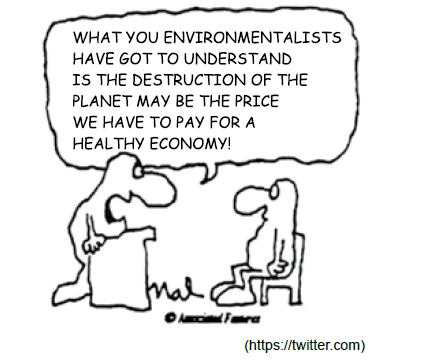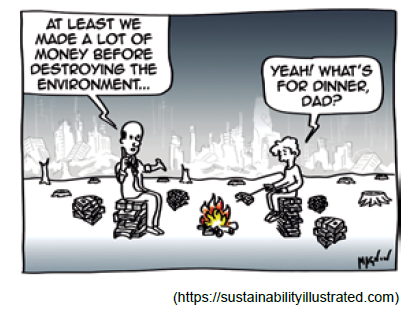Questões de Vestibular Comentadas sobre inglês
Foram encontradas 799 questões
Texto 1
Part of President Obama’s Speech at Rutgers Commencement 2016
Facts, evidence, reason, logic, an understanding of science — these are good things. These are qualities you want in people making policy. These are qualities you want to continue to cultivate in yourselves as citizens. That might seem obvious. That’s why we honor Bill Moyers or Dr. Burnell. We traditionally have valued those things. But if you were listening to today’s political debate, you might wonder where this strain of anti-intellectualism came from.
So, Class of 2016, let me be as clear as I can be. In politics and in life, ignorance is not a virtue. It’s not cool to not know what you’re talking about. That’s not keeping it real, or telling it like it is. That’s not challenging political correctness. That’s just not knowing what you’re talking about.
You know, it’s interesting that if we get sick, we actually want to make sure the doctors have gone to medical school, they know what they’re talking about. If we get on a plane, we say we really want a pilot to be able to pilot the plane. The rejection of facts, the rejection of reason and science — that is the path to decline.
From: shorturl.at/deAIX. Accessed on 04/01/2020
Texto 1
Part of President Obama’s Speech at Rutgers Commencement 2016
Facts, evidence, reason, logic, an understanding of science — these are good things. These are qualities you want in people making policy. These are qualities you want to continue to cultivate in yourselves as citizens. That might seem obvious. That’s why we honor Bill Moyers or Dr. Burnell. We traditionally have valued those things. But if you were listening to today’s political debate, you might wonder where this strain of anti-intellectualism came from.
So, Class of 2016, let me be as clear as I can be. In politics and in life, ignorance is not a virtue. It’s not cool to not know what you’re talking about. That’s not keeping it real, or telling it like it is. That’s not challenging political correctness. That’s just not knowing what you’re talking about.
You know, it’s interesting that if we get sick, we actually want to make sure the doctors have gone to medical school, they know what they’re talking about. If we get on a plane, we say we really want a pilot to be able to pilot the plane. The rejection of facts, the rejection of reason and science — that is the path to decline.
From: shorturl.at/deAIX. Accessed on 04/01/2020
Text 2
Home

No one leaves
home unless home is the mouth of a shark
you only run for the border
when you see the whole city running as well
Your neighbors running faster than you
breath bloody in their throats
the boy you went to school with
who kissed you dizzy behind the old tin factory
is holding a gun bigger than his body
you only leave homewhen
home won‘t let you stay.
No one leaves home unless home chases you
fire under feet
hot blood in your belly
it‘s not something you ever thought of doing
until the blade burnt threats into
your neck
and even then you carried the anthem under
your breath
only tearing up your passport in an airport toilet
sobbing as each mouthful of paper
made it clear that you wouldn‘t be going back.
You have to understand,
that no one puts their children in a boat
unless the water is safer than the land
no one burns their palms
under trains
beneath carriages (…)

I want to go home,
but home is the mouth of a shark
home is the barrel of the gun
and no one would leave home
unless home chased you to the shore
unless home told you to quicken your legs
leave your clothes behind
crawl through the desert
wade through the oceans (…)
No one leaves home until home is a sweaty voice in your ear
saying –
leave,
run away from me now
I dont know what I‘ve become
but I know that anywhere
is safer than here.
By Warsan Shire. Disponível em: https://www.facinghistory.org/educator-resources/current-events/many-faces-global-migration#8 Excertos.
Acesso em: set. 2020.
Text 2
Home

No one leaves
home unless home is the mouth of a shark
you only run for the border
when you see the whole city running as well
Your neighbors running faster than you
breath bloody in their throats
the boy you went to school with
who kissed you dizzy behind the old tin factory
is holding a gun bigger than his body
you only leave homewhen
home won‘t let you stay.
No one leaves home unless home chases you
fire under feet
hot blood in your belly
it‘s not something you ever thought of doing
until the blade burnt threats into
your neck
and even then you carried the anthem under
your breath
only tearing up your passport in an airport toilet
sobbing as each mouthful of paper
made it clear that you wouldn‘t be going back.
You have to understand,
that no one puts their children in a boat
unless the water is safer than the land
no one burns their palms
under trains
beneath carriages (…)

I want to go home,
but home is the mouth of a shark
home is the barrel of the gun
and no one would leave home
unless home chased you to the shore
unless home told you to quicken your legs
leave your clothes behind
crawl through the desert
wade through the oceans (…)
No one leaves home until home is a sweaty voice in your ear
saying –
leave,
run away from me now
I dont know what I‘ve become
but I know that anywhere
is safer than here.
By Warsan Shire. Disponível em: https://www.facinghistory.org/educator-resources/current-events/many-faces-global-migration#8 Excertos.
Acesso em: set. 2020.
Text 2
Home

No one leaves
home unless home is the mouth of a shark
you only run for the border
when you see the whole city running as well
Your neighbors running faster than you
breath bloody in their throats
the boy you went to school with
who kissed you dizzy behind the old tin factory
is holding a gun bigger than his body
you only leave homewhen
home won‘t let you stay.
No one leaves home unless home chases you
fire under feet
hot blood in your belly
it‘s not something you ever thought of doing
until the blade burnt threats into
your neck
and even then you carried the anthem under
your breath
only tearing up your passport in an airport toilet
sobbing as each mouthful of paper
made it clear that you wouldn‘t be going back.
You have to understand,
that no one puts their children in a boat
unless the water is safer than the land
no one burns their palms
under trains
beneath carriages (…)

I want to go home,
but home is the mouth of a shark
home is the barrel of the gun
and no one would leave home
unless home chased you to the shore
unless home told you to quicken your legs
leave your clothes behind
crawl through the desert
wade through the oceans (…)
No one leaves home until home is a sweaty voice in your ear
saying –
leave,
run away from me now
I dont know what I‘ve become
but I know that anywhere
is safer than here.
By Warsan Shire. Disponível em: https://www.facinghistory.org/educator-resources/current-events/many-faces-global-migration#8 Excertos.
Acesso em: set. 2020.
Text 1
What is Distance Learning and Why Is It So Important?

Text 1
What is Distance Learning and Why Is It So Important?

Text 1
What is Distance Learning and Why Is It So Important?

(“E-democracy and digital gaps”. www.svekom.se)
A ferramenta apresentada no excerto remete a uma característica da política ateniense no período clássico, que diz respeito
(Lucy Colback. www.ft.com, 28.02.2020. Adaptado.)
O excerto descreve mudanças nas relações geopolíticas entre Estados Unidos e China nas últimas décadas. Essas mudanças resultaram em






Analise o cartum.

A fala do personagem


O cartum dialoga com o seguinte trecho do texto “Education for Sustainable Development”:

